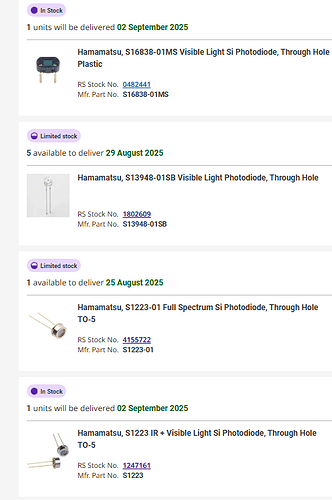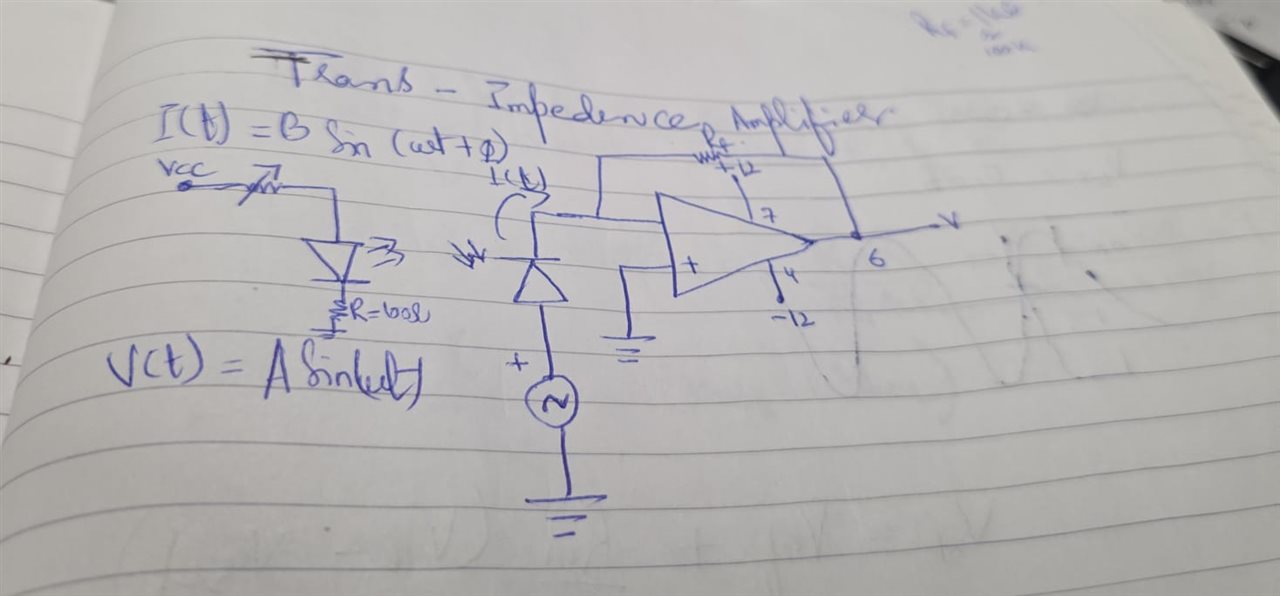I am currently working on a project to develop a fibre optic dosimetry system. The system uses an organic scintillator (BCF-60), which emits green light at 530 nm, with an active volume of 0.8 mm³.
I am in the process of designing a transimpedance amplifier (TIA) circuit using different photodetectors, which I selected based on their spectral response range (360 nm to 900 nm).
Could you please guide me on the key tests I should perform to help select the most reliable and suitable photodiode for my application?
I am planning to test the TIA response using different LEDs (blue, green, red, and IR). I would appreciate your suggestions on any additional quick and effective tests I could perform to further characterize the photodiodes for use in my dosimetry system.
In TIA cct I used Rf 100k and 741 opamp.
Kindly please guide..
Kind regards
Hasham
...

